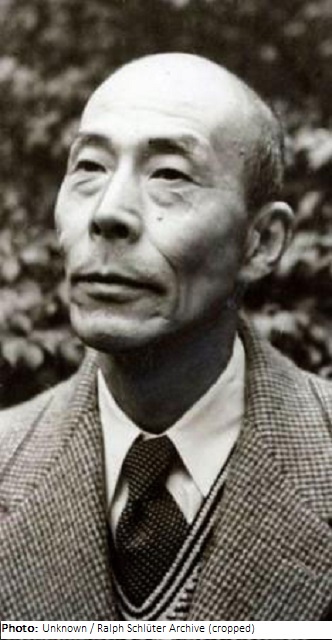Hide Kawanishi

Biographical information
| Roles | Competed in Olympic Games |
|---|---|
| Sex | Male |
| Full name | Hide (Hideo-)•Kawanishi |
| Used name | Hide•Kawanishi |
| Original name | 川西•英 (英雄-) |
| Born | 9 July 1894 in Kobe, Hyogo (JPN) |
| Died | 20 February 1965 in Kobe, Hyogo (JPN) |
| NOC |  Japan Japan |
Biography
Self-taught Japanese painter Hide Kawanishi lived and worked throughout his career in the port city of Kobe. He was an exception among Sosaku hanga artists, most of whom worked in Tokyo. His work was noted for its forceful and distinctive use of color. Kawanishi purposely softened the edges of his forms by using a round chisel rather than a knife to carve the contours. Kawanishi came from a merchant class background and took up a career in art over his family’s objections. His son Yusaburo also became an artist.
In the Official Art Catalog of 1932, he is listed with the first name as “Ei”, which is due to an incorrect transliteration. Baseball Game at Koshien was a color woodblock print measuring 33 x 43.7 cm (image) from 1932, depicting the opening ceremony of the middle school baseball tournament at Koshien Stadium near Kobe. Another woodblock print from 1932 was Football at Higashi Yuenchi Park, Kobe sized 20 x 30 cm. “Hi-gashi Yuenchi” was opened in 1868 as a sports park exclusively for foreigners. It also became known as the cradle of modern sports in Japan such as soccer and bowling. The place name “Toynen” in the title given in the 1932 art catalog could not be identified.
Results
| Games | Discipline (Sport) / Event | NOC / Team | Pos | Medal | As | |
|---|---|---|---|---|---|---|
| 1932 Summer Olympics | Art Competitions |  JPN JPN |
Hide Kawanishi | |||
| Painting, Graphic Arts, Open (Olympic) | ||||||
| Painting, Graphic Arts, Open (Olympic) |